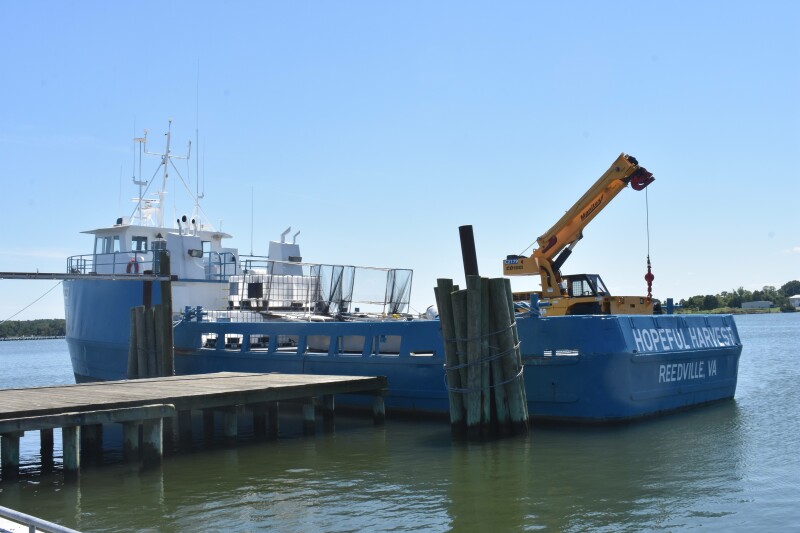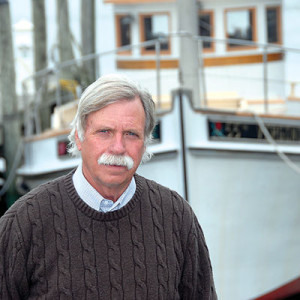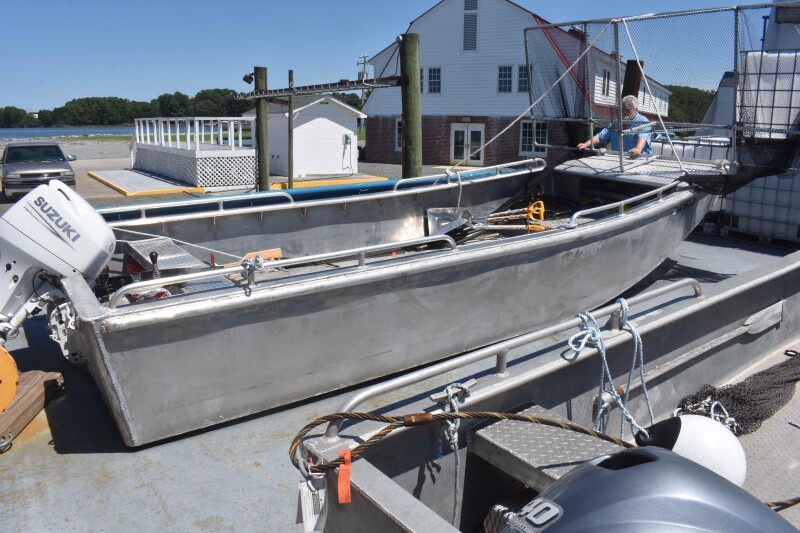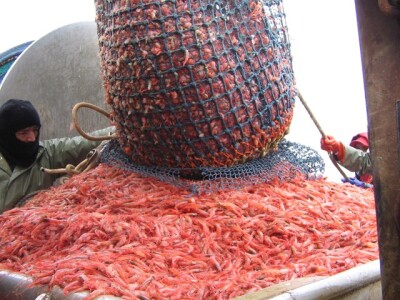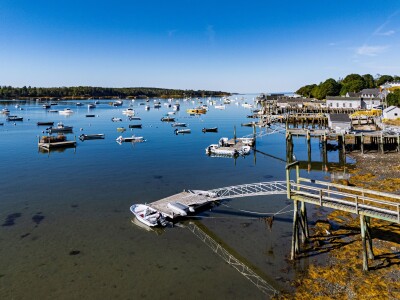Omega Protein’s last menhaden net tear on Chesapeake Bay has led to the firm designing and building a new clean-up vessel called a “skimmer boat.” It is designed to rapidly pick up dead fish on and below the surface of the water.
The 20’ x 8’ aluminum garvey-style boat was designed and built by Lambert Walker of Reedville, Va., who retired from Omega in 2013. Walker was asked to come out of retirement to build a new boat. Before he had retired, he had built a similar boat for the same type of use.
Walker, 72, says he is “just an old welder.” He is an old welder and much more. Walker started working in the companies’ metal shop in 1973, when Omega Protein was then known as Zapata Haynie Corporation.
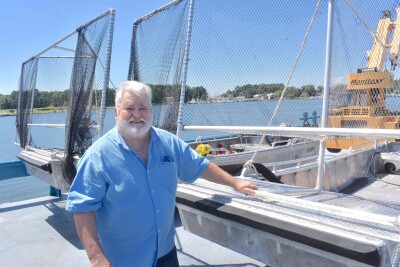
His boatbuilding skills and knowledge have come from 40 years of building aluminum purse seine boats and handling maintenance needs on the companies’ equipment and on Omega’s steel hull fishing vessels.
“I just took out my scale rule, drew it up and welded it together,” he says modestly. “It is a nice little boat, and it will meet the need when it is necessary.”
The hull is built out of 20’ x 8’ 1/4” aluminum plate, which minimizes the amount of welding because the 20’ x 8’ plate covers most of the bottom, he says. Walker has nothing but praise for the use of aluminum as a boatbuilding material.
“It gives you one tough boat,” says Walker. “Our aluminum purse boats speak to the toughness of the material. They work the hell out of those boats and they keep on going.”
The flat bottom on the garvey has no V in the bow, as is the case with some garveys. Walker welded 1/4” x 2” x 2” aluminum angle on each side on the outside of the bottom, creating an edge that helps keep the hull from sliding when underway, he says.
There are four watertight compartments that Walker refers to as tanks, built between the bilge and deck floor and under a step up near the bow which provides flotation. “The boat weighs a little over a ton,” he says. “Without some flotation in her if she were to sink, she would go straight to the bottom,” he says.
There are two structural bulkheads to stiffen the hull. One is located at the aft end of the bow deck and the other at the aft end of a step up in the deck near the bow. The deck floor and bow deck are built out of 1/4” diamond aluminum plate which provides a rough surface and a non-slip working area.
The purse net is mounted to a frame that is attached to the bow and made from 1-1/2” aluminum pipe. The frame is mounted on two swivels which allow the net to be manually dropped down over the bow into the water and to be raised up out of the water.
The sides are built low. “I made the sides low so the men can bend over and get hold of the net,” he says. The blunted bow has a built-in rubber bow fender and a hook is installed in the bow for towing and when loading the boat into and out of the water.
Six-inch wide gunnels are installed to further stiffened the hull and are made from 1/4” plate. Hand rails are mounted on top of the gunnels and are made from 1 1/2” pipe which gives the men a surface to hold on to and to tie down lines. An open compartment for storage has been built under the bow deck.
The skiffs are powered by four-stroke outboard engines. The older one has a 40 h.p. Yamaha and the new one a 60 h.p. Suzuki. Steering sticks are used to steer the boats. There is plenty of open space inside the boat for storage of plastic tubs that are used to carry back the dead fish.
When called into service, the skiffs are carried to the work area aboard the deck of the steel hull Hopeful Harvest, which has a C2179 Manitex crane to hoist the boats in and out of the water in a hurry.
“This rig is not something we are going to use much,” says Walker. “We rarely ever have net tears, but if we do we are ready to go out there and clean it up,” said Walker.
